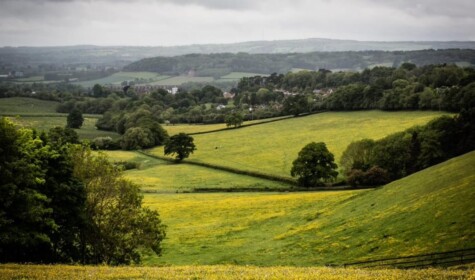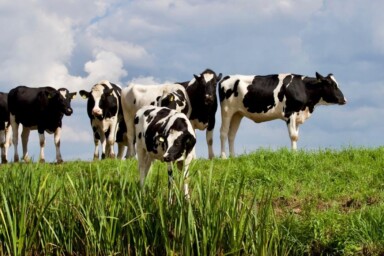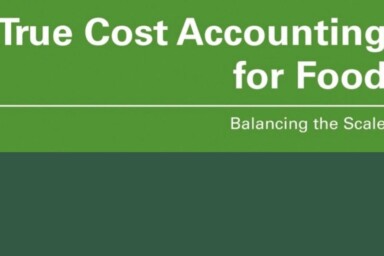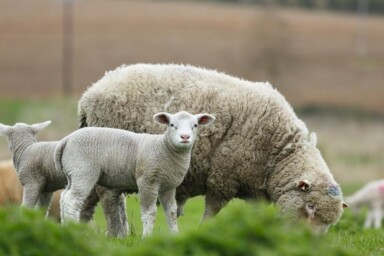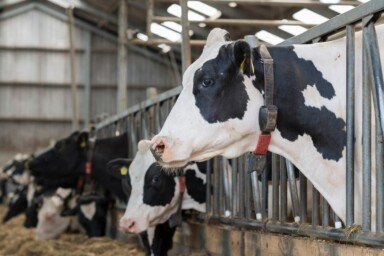SFT Policy Director, Richard Young, delves behind the headlines following the announcement of Defra’s plans for the future of farming in England and finds some disquieting facts.
There are some things to like about Defra’s Agricultural Transition Plan, published earlier this week, but there is, however, one huge question: will it really make things better for the environment, as the Government claims and most people assume, or could it actually end up making things worse?
The impact of removing direct payments
In its 2018 publication, Moving away from Direct Payments, Defra led on the fact that, on average, direct payments make up just 9% of farm revenue in England. Dig just a little deeper and it soon becomes clear there is a big difference between revenue and profit, as well as between different farm types. At one extreme, intensive chicken farms made an average annual profit of £112,000, with direct payments accounting for just 8% of this. At the other extreme, lowland grazing livestock farms made an average profit of just £15,500, with 94% of this coming from direct payments. The best place to see this clearly set out is in the graph on page 36 of this Defra Evidence and Analysis paper.
It has been widely recognised that phasing out basic payments (which account for the lion’s share of direct payments) will have a huge impact on the grazing livestock sector. As a Times’ leader on Monday pointed out, ‘Many farms will inevitably become unviable as these are withdrawn.’
The potential impact of this on the English countryside and rural communities only becomes clear when you realise that 55% of farmland in England is grass, 41% of this permanent pasture, the rest temporary grassland.
Defra has a proposed a three-fold solution to this:
- pay a lump sum to those farmers who want to leave the industry
- encourage farmers who want to stick with cattle or sheep to intensify and become more productive
- encourage farmers on the poorer land for whom that’s not an option, to give up their livestock and plant trees instead
At face value, this looks like an attractive option and that is how most commentators have seen it. Cattle and sheep numbers will inevitably decrease further (they are already down 25% and 27% respectively on the numbers in the 1980s) and that will reduce methane emissions in England. At the same time the trees will draw down carbon from the atmosphere and lock it up in timber and in the soil where the trees are grown – a win-win situation for the Government and a helpful step on the road to reducing our net greenhouse emissions?
Not quite so fast!
Let’s look at two of the key objectives in a little more detail. They are: to help the UK meet its net zero carbon emissions target; and to increase biodiversity on England’s biodiversity-poor farmland.
Planting more trees on grasslands and global warming
The key aspect which seems not to have been considered, is that getting rid of traditional grazing livestock farms and planting trees instead will result in increased imports of beef and lamb to make good the lost production, while consumption stays at current levels. In most cases that meat will have a significantly higher carbon footprint than beef or lamb produced in the UK. There’s been an assumption that this will only affect the lowest productivity farms in upland areas but, based on the evidence published so far, it’s hard to see many lowland, relatively productive, farms surviving.
Beef’s varying carbon footprint
One big problem with this is that the average global carbon footprint per kilo of beef is significantly more than double, and that of lamb almost double, that of beef and lamb produced in the UK (see tables 1&2 of this FCRN report). This is essentially because even our poorest grasslands are more productive than those in many parts of the world because we have high rainfall levels. But without the current level of direct payments, the price of suckler beef would need to double to make production economical even on the most productive grassland, and that’s not going to happen, at least not in the near future.
Declining UK production and imported beef
In the early 1990s the UK was self-sufficient in beef production, but we now only produce three-quarters of the beef we consume. In 2019, we imported 380,000 tonnes of carcase and processed beef and we exported 110,000 tonnes, leaving a net import of about 270,000 tonnes. Approximately two-thirds of this came from Ireland. We must hope for a sensible trade deal with the EU, but in the event of a no-deal Brexit, it is not entirely clear what level of WTO tariffs would apply to Irish beef and whether it would still be economical to import it. But let’s assume for the moment that one way or another, it continues to come into the UK. In that situation we will still need to import more beef from somewhere to make up for lost production in the England.
The Government’s advisory Committee on Climate Change is calling for a 10% reduction in cattle and sheep numbers in the UK by 2050, with 30,000 hectares of the grassland planted with trees every year for the next 30 years. Unlike Defra, however, they make clear, this needs to happen in tandem with a 20% reduction in meat consumption per person, to allow for expected population growth and avoid importing meat with a higher carbon footprint. Given the very low profitability of beef production in the UK, it seems likely that the phasing out of basic payments will lead to a 10% or greater reduction of beef production much sooner than 2050, possibly within the next five years, before there has been any matching decline in beef consumption.
On my own farm, we have been receiving on average about £27,000 a year in basic payments and that on its own is considerably more than the annual profit. This has to be shared between three partners, two of them working more than 60 hours a week, 52 weeks of the year. As such, it’s difficult to see a future for our organic 100% grass-fed beef, even though we sell it at a small premium. We are lucky in that we own the farm and therefore have no rent to pay. Apply these economics to tenant farmers and it’s easy to see what could happen.
Imports of beef from Brazil
The UK already imports 3,600 tonnes of Brazilian carcase beef and 22,900 tonnes of corned beef annually and Brazil is one of the countries supermarkets are likely to look to, in order to make good any further decline in home production. Academics have shown that the carbon footprint of Brazilian beef produced on former rainforest is in the region of 700 kg CO2 per kg beef (the average figure over 20 years). This is at least 14 times higher than beef produced in the UK and more than twenty times higher than UK organic beef.
Although only about 25% of Brazilian beef is produced on former rainforest land, the fact that Brazil continues to increase production to meet growing global demand, suggests that regardless of the actual farms from which Brazilian beef imported into the UK comes, we will inevitably be adding to that overall increasing demand which will result in further rainforest destruction. As it happens however, Earthsight is one of several organisations to produce an analysis which shows that about 75% of the beef imported into the UK from Brazil is actually associated with deforestation in one way or another.
Defra’s plans could result in increased, rather than decreased global warming
As such, if reducing beef production in England results in increased imports of Brazilian beef, there will be a significant net increase in global warming as a result. Yet ironically, the UK Government will have achieved its objective and be able to boast that it has met its emission targets sooner than other countries. We also import beef from two African countries, where, in a more egalitarian world, it would be used to enrich the nutritionally deficient diets of the poorest people, rather than have an ‘honoured place on the tables of post-Brexit Britain’, as the Prime Minister, Boris Johnson put it. While this beef is not associated with rainforest destruction, its carbon footprint will inevitably also be much higher than that of UK beef, because the herbage is very poor due to low rainfall. The productivity is, therefore, much lower and the carbon footprint much higher.
Impact on biodiversity
We do, of course, need to do a huge amount to help rebuild biodiversity in the UK, including giving some land back to nature. There is emerging evidence that some rare birds, such as the cuckoo return after upland grazing ceases and there is little doubt that some upland pastures in particular have been too heavily stocked. Yet as English Nature made clear some years ago, ‘livestock grazing is essential for the management of many of England’s most important wildlife habitats.’
Trees vs. Grass
One problem with taking large blocks of the least productive land out of production and giving it to woodland or natural regeneration is that a lot of that less productive grassland is less productive because it’s been in agri-environment schemes for the last 20 or more years, where farmers, like me, have been paid to reduce stocking levels and encourage wildflowers and the insects and birdlife this sustains. If for economic reasons, we are forced to plant trees on our remaining grassland (25% of our 400-acre farm is already woodland), that will destroy precious grassland ecosystems which include a wide range of genuinely wild wildflower, herbs and a very diverse range of grasses not widely found these days. These support a wide variety of birds, butterflies, moths and other invertebrates. Even if the land was planted with oak and other hardwood trees, it would take a century or more to replace the biodiversity that will be lost, and it would be a different biodiversity at that.
Conifers vs. hardwoods
However, I doubt if it will be economical to plant hardwoods in most cases, which would, of course, be the best option, because there will be no income from the land for at least 300 years. I can’t quite see Rishi Sunak committing to provide income forgone to farmers for that long. The most widely used option will be yet more conifers, because the Government might fund schemes with taxpayers’ money for 20-30 years, after which there will start to be some very modest income, before the trees are felled after 45-50 years. Once that happens significant amounts of the captured carbon will go straight back in the atmosphere via wood chip heating plants. The other problem, of course, with conifers is that they are biodiversity deserts, so a transition from grasslands to woodland does not offer great hope for increasing biodiversity overall.
Biodiversity benefits of grazing livestock
Bats and many lowland bird species have evolved in harmony with grasslands and grazing animals and the insects they support. Swallows and martins are prime examples, starlings and rooks are others. You only have to watch flocks of swallows or house martins on a cool and humid day flying low, back and forth over a herd of cattle, to realise this is the only way they can find enough insects to feed on in such conditions. The sixty or so species of dung beetles supported by cattle and sheep also provide an important range of ‘ecosystem services’. However, over-grazing is detrimental and can reduce both food sources and nesting sites for many species, as the BTO makes clear.
Comparative productivity of Brazilian and UK grasslands
Then take into account that for every hectare of grassland planted with trees in the UK, approaching two hectares of rainforest would have to be felled to make up the lost production. That’s an aspect that really shocked me when I discovered it. The productivity of Brazilian grasslands increased from 43-60 kg carcase weight of beef per hectare, between 2000 and 2010 and may have increased a little further since then. But compare that with the 100-120 kg of carcase weight per hectare we get on our extensive grass farm and with dairy beef, the productivity is even higher. Our land has to support both the beef animal and its mother.
Is there a better solution?
We undoubtedly need more trees in England, but we cannot afford to lose too much productive land because the knock-on biodiversity impact of that elsewhere on the planet could be greater than any benefit gained. What we should, therefore, do instead, at least in the first instance, is support farmers financially for a few years to plant, protect and establish hardwoods, predominantly oaks, every 20 metres in hedgerows, slightly offset so the hedge can still be trimmed mechanically (though preferably not every year). These days I estimate, very roughly, that about 10% of hedgerows contain large trees and many run for miles without so much as a single sapling. Getting big hardwoods back into hedgerows where they were once common would make almost no difference to agricultural productivity, but those trees, once established, could go on happily sequestering carbon for 300-500 years without any further taxpayers’ money. Oak trees support more forms of wildlife than any other native trees in England. Where possible, sub-dividing huge fields with new hedgerows and species trees every so many metres would add even more, again with little loss of production, but a big increase in carbon sequestration and biodiversity.
CAP rules, particularly as they were argued for by successive UK administrations and applied in the UK without the nuance that was actually often there for the taking in the regulations, have contributed to the decimation of wildlife on much of UK farmland. We don’t yet know what the new Environmental Land Management schemes will have to offer, but what indications there have been, make it difficult to believe they will create a thriving industry producing food in harmony with the environment. Yes, there will be a some additional habitat and some of that should be beneficial, but it looks as if we will see even greater separation of wildlife and food production, and that approach resulted in the relentless decline in wildlife since the last World War. One clear indication that Defra’s concept of sustainable production is very different to that of the SFT, is the decision to end the three crop rule. This was introduced by the EU against some UK opposition, to increase diversity and prevent vast areas of land all sown to the same two crops, something that is very unhelpful for wildlife.
Defra also sees a future driven by more technology, not by any genuine attempt to farm in more integrated ways. The approach will force most of the farmers that remain to farm their land more, not less, intensively, in order to survive in a world where other farmers are financially supported to produce food, but they are not.
It’s the worst of all worlds, dreamed up by policymakers in Whitehall and some environmentalists, who have little if any practical experience of food production and no real feel for the land, let alone the planet. Defra expects large numbers of entrepreneurial young farmers to come in and find new ways to make money on the land. They certainly deserve their chance, but they will have an uphill struggle without support for food production, because supermarkets have driven down the price of food to below the cost of production for all but the largest and most intensive of farmers on the best land. The new entrants that make a go of it, are more likely to do that by using their farm as a base to make a living in some other way than by producing food.
